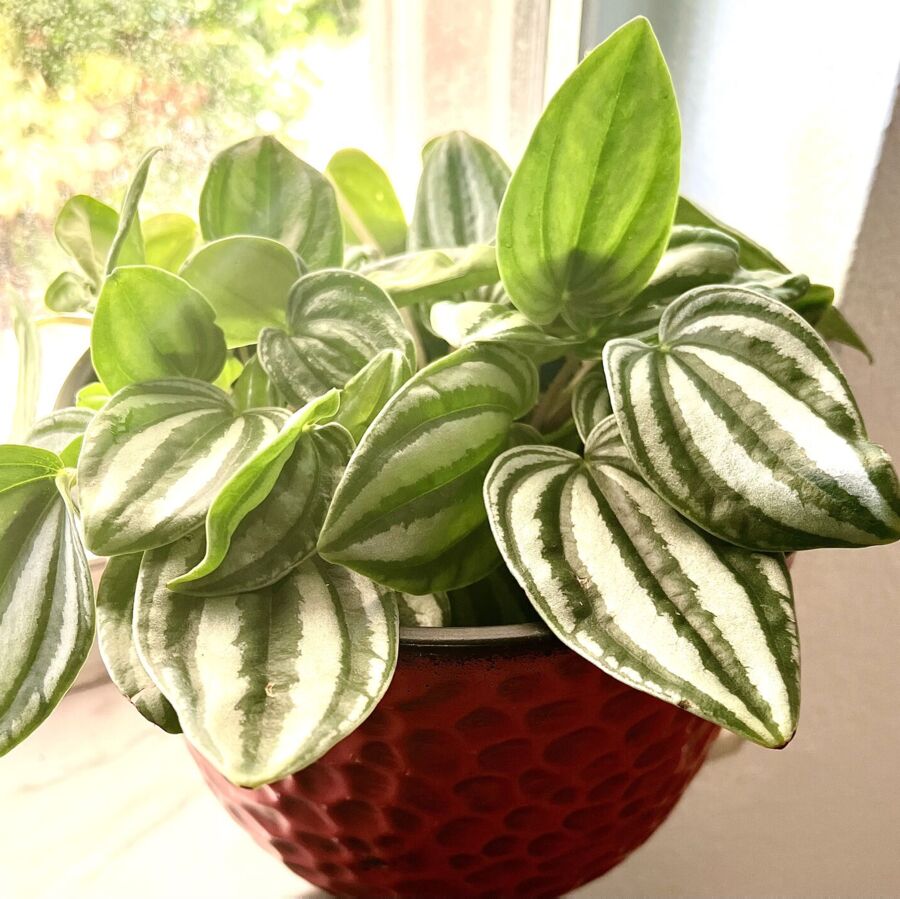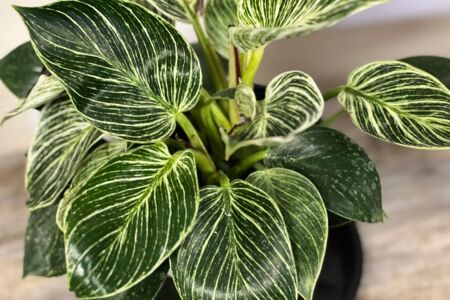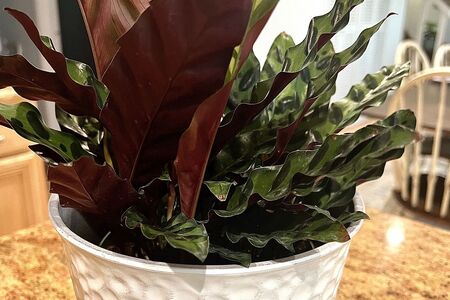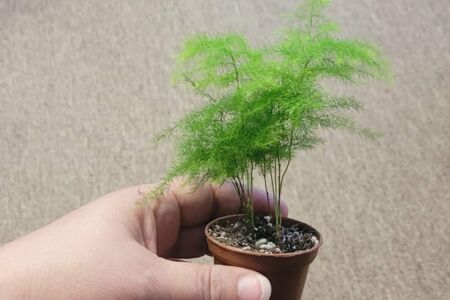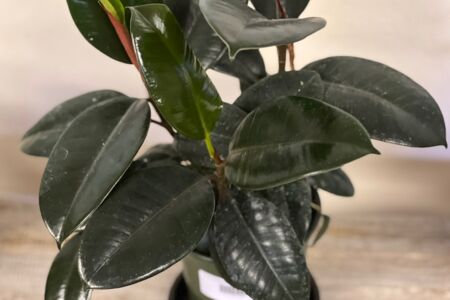Watermelon Peperomia Begonia
The Watermelon Peperomia (Peperomia argyreia), also known as the Watermelon Begonia, is so captivating that it might be confused for a tempting treat. Its remarkable similarity to a watermelon is truly striking. Esteemed for its unique foliage adorned with silver stripes, this plant requires minimal maintenance. It's also pet-friendly! The size ranges approximately from 6 to 8 inches tall, and it comes in a 4-inch pot.
In terms of lighting, this plant thrives in bright, indirect light. While it can tolerate moderate shade, be aware that it may lose some of its distinctive coloring under such conditions.
- Care Tips for Watermelon Peperomia/Peperomia argyreia/Watermelon Begonia
- Light:
- These plants prefer bright, indirect light. Avoid direct sunlight, as it can scorch the leaves.
- If you notice the plant stretching or the colors fading, it may need more light.
- Temperature:
- Maintain a consistent indoor temperature between 65°F to 80°F (18°C to 27°C). Avoid drafts and sudden temperature fluctuations.
- Humidity:
- Watermelon Peperomias like higher humidity levels, but they can tolerate average indoor humidity. You can increase humidity by misting the plant or using a humidity tray.
- Watering:
- Allow the top inch (2.5 cm) of the soil to dry out before watering. Stick your finger into the soil to check moisture levels.
- Water thoroughly but avoid letting the plant sit in standing water, as it can lead to root rot.
- During the winter, reduce watering frequency because the plant's growth slows down.
- Soil:
- Use a well-draining, peat-based potting mix. A mix formulated for succulents or cacti works well.
- Potting:
- Repot your Watermelon Peperomia when it becomes root-bound or the soil is exhausted, typically every 2-3 years in the spring. Choose a slightly larger pot.
- Fertilizing:
- Feed your plant during the growing season (spring through early autumn) with a balanced, diluted liquid fertilizer every 4-6 weeks. Reduce or stop fertilizing during the winter months when the plant is not actively growing.
- Pruning:
- Prune to control the size and shape of the plant, and to remove any dead or yellowing leaves. This helps maintain its appearance.
- Pests:
- Keep an eye out for common houseplant pests like mealybugs and spider mites. If you notice any, remove them manually or use a gentle insecticidal soap.
- Propagation:
- Watermelon Peperomias can be propagated through leaf or stem cuttings. Allow the cuttings to callus for a day or two before planting them in a well-draining mix.
- Support:
- As the Watermelon Peperomia grows, it may become top-heavy. Use stakes or a small trellis to support the plant if needed.
- Rotation:
- Rotate your plant occasionally to ensure even growth on all sides, as they tend to lean towards light sources.
- Dusting:
- Gently wipe the leaves with a damp cloth to remove dust, which can hinder photosynthesis.
By following these care tips, you can enjoy a healthy and vibrant Watermelon Peperomia begonia plant in your indoor space. Remember that consistency in care is key to keeping this lovely plant thriving.
